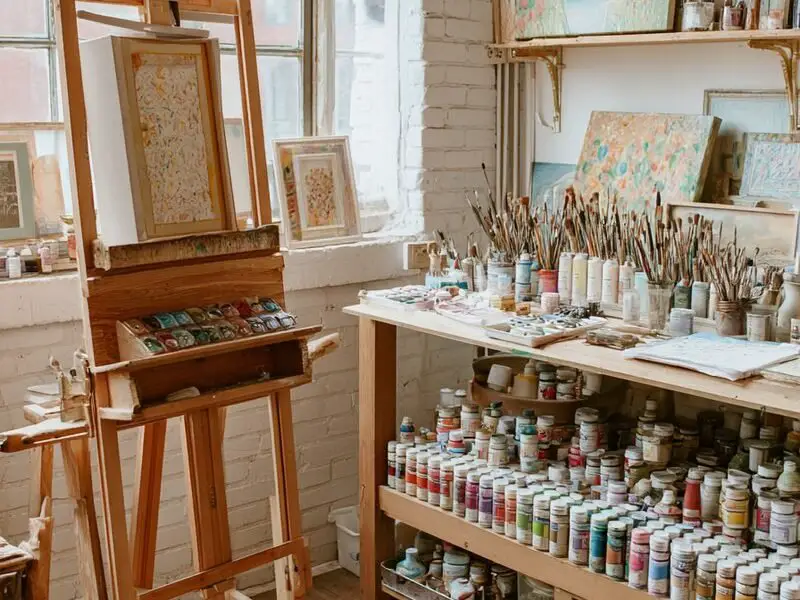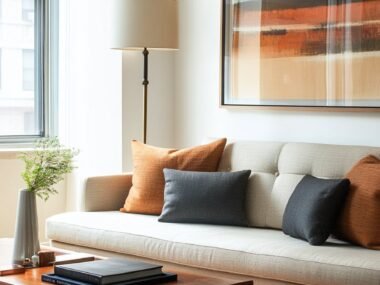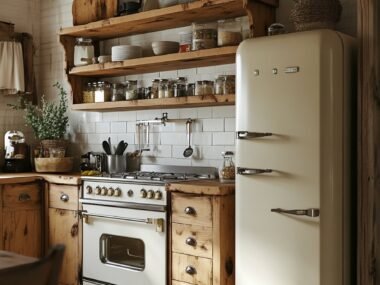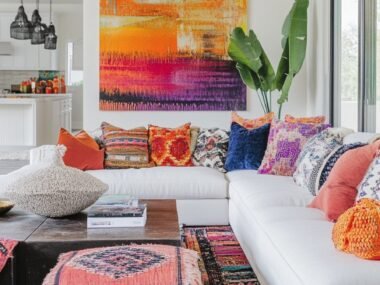Imagine a space in your home specifically designed for your passion. A place where inspiration flows freely and projects come to life without the distractions of daily clutter. Creating 8 stunning hobby room designs for ultimate productivity is more than just decorating a spare corner; it’s an investment in your well-being and creative output. Whether you paint, build models, sew, write, or code, a dedicated space can dramatically enhance your focus and efficiency. Studies show that a well-organized workspace can increase productivity by up to 20%, and a dedicated hobby space applies this principle directly to your creative pursuits.
In this article, we’ll explore eight distinct approaches to designing a hobby room that not only looks beautiful but also functions seamlessly to support your specific craft. We’ll delve into practical tips, expert insights, and real-world examples to help you envision and create your own personal sanctuary. You’ll discover how clever layout, smart storage solutions, thoughtful lighting, and ergonomic considerations can transform an ordinary room into an extraordinary hub of creativity and productivity. Get ready to unlock the full potential of your hobbies with a space that truly works for you.
1. The Artist’s Light-Filled Studio Haven


For painters, illustrators, or sculptors, light is paramount. A stunning hobby room design often prioritizes natural light, ideally from a north-facing window which provides consistent, diffused illumination throughout the day, minimizing harsh shadows. However, not everyone has access to ideal natural light, and that’s okay. Layered artificial lighting is crucial. Combine overhead ambient lights with adjustable task lighting focused on your workspace. Consider daylight-balanced bulbs (5000K-6500K) to render colors accurately. Storage is also key for keeping paints, brushes, canvases, and tools organized. Open shelving or wall-mounted organizers are excellent for visible storage, while drawers or cabinets can hide less attractive supplies. A sturdy easel, a large work table with a wipeable surface, and perhaps a utility sink for cleanup are essential elements. For instance, imagine a corner flooded with soft light, a vintage wooden easel standing proudly, tubes of vibrant paint neatly lined up on a custom-built shelf nearby, and a rolling cart holding solvents and rags within easy reach. It smells faintly of linseed oil and turpentine, a scent synonymous with creativity. To maintain flow, ensure easy access to materials you use most frequently. Furthermore, having a comfortable stool or chair is vital for long sessions. For example, artist Maria Sanchez, known for her vibrant watercolors, notes, “My studio’s design directly impacts my painting. The ample light and accessible supplies mean I spend less time searching and more time creating. It’s not just about having a room; it’s about designing a workspace that respects the creative process.” She recommends using clear jars for brushes and pencils so you can see everything at a glance. Transitioning from the bright world of art, let’s consider spaces where precision crafting takes center stage.
2. The Crafter’s Organized Paradise

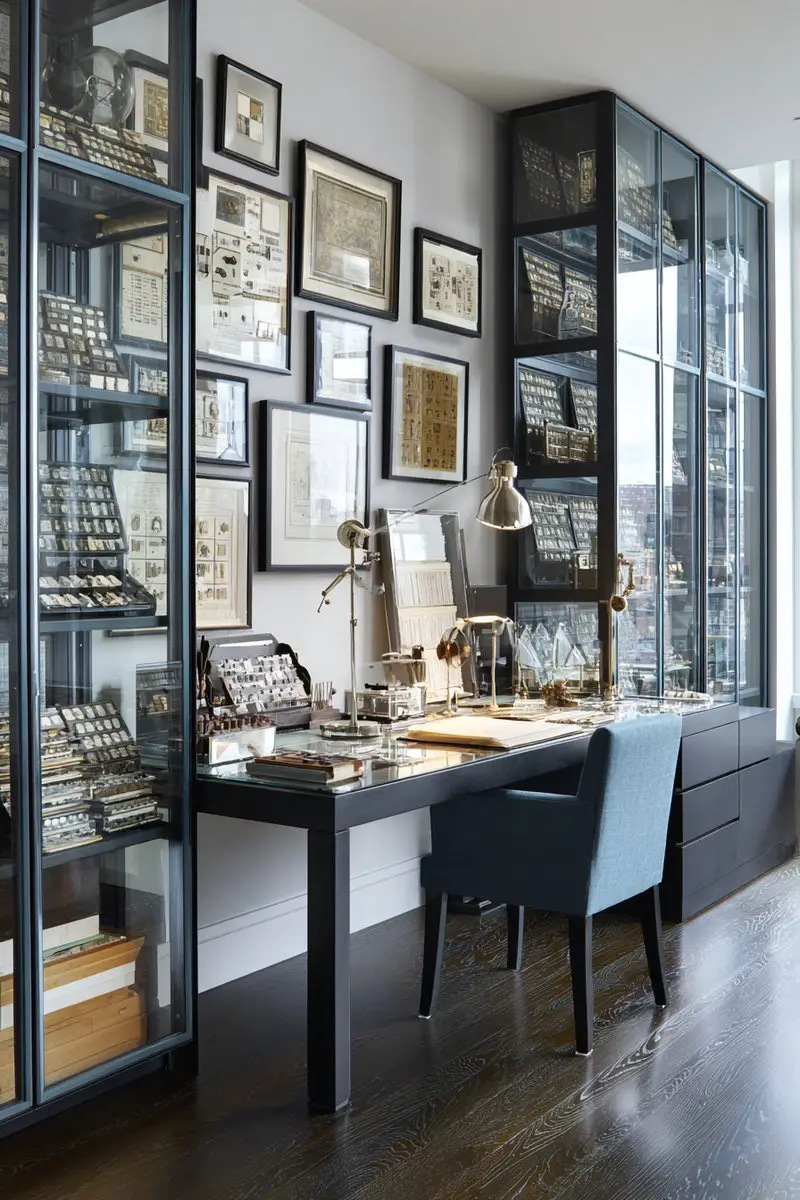
Crafting encompasses a vast array of activities, from scrapbooking and card-making to jewelry design and textile work. Regardless of your specific craft, organization is often the biggest challenge and the secret to an ultimately productive hobby room. A stunning hobby room for a crafter relies heavily on smart storage solutions. Think pegboards for hanging tools, clear stackable bins for small components, modular shelving systems like IKEA’s Kallax or similar options that can accommodate baskets and inserts, and rolling carts to keep supplies mobile. Vertical storage is your best friend in a crafting space, especially if space is limited. A dedicated cutting mat surface, perhaps integrated into a desk or a foldable table, is highly practical. Consider also integrating a specific station for each step of your process, like a ‘cutting zone,’ a ‘sewing zone,’ or a ‘stamping zone.’ For instance, a knitter might have designated bins for different yarn weights and projects, a comfortable armchair, and excellent lighting for close work, while a jewelry maker needs tiny drawers and containers for beads and findings, plus specialized tools arranged logically. A recent survey found that crafters with dedicated, organized spaces are 40% more likely to finish projects they start. This highlights the power of environment on completion rates. Moreover, using labeled containers saves immense time searching. As organizing expert Chloe Davis, author of ‘Crafting Calm,’ advises, “Don’t just store things; organize them functionally. Group items by how you use them, not just what they are. This approach makes starting and finishing a project so much easier.” Next, let’s explore spaces built for focus and digital creation.
3. The Digital Creator’s Tech Sanctuary
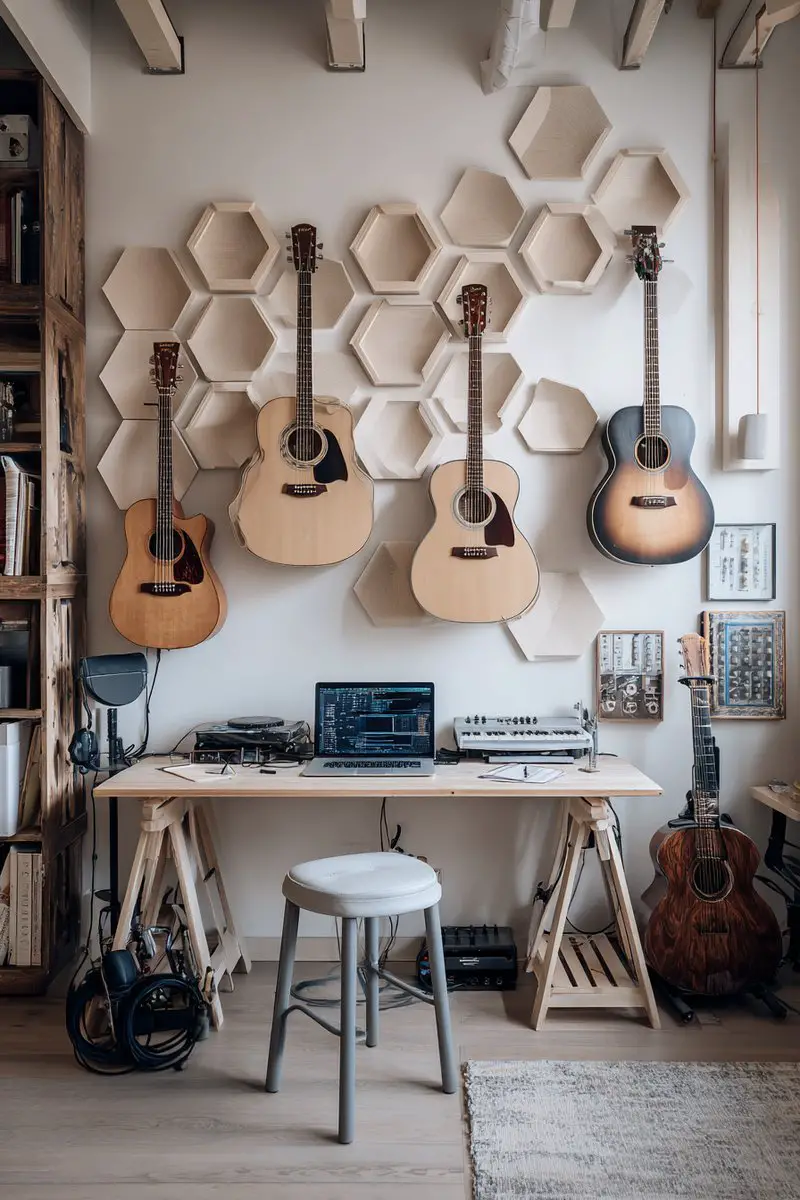
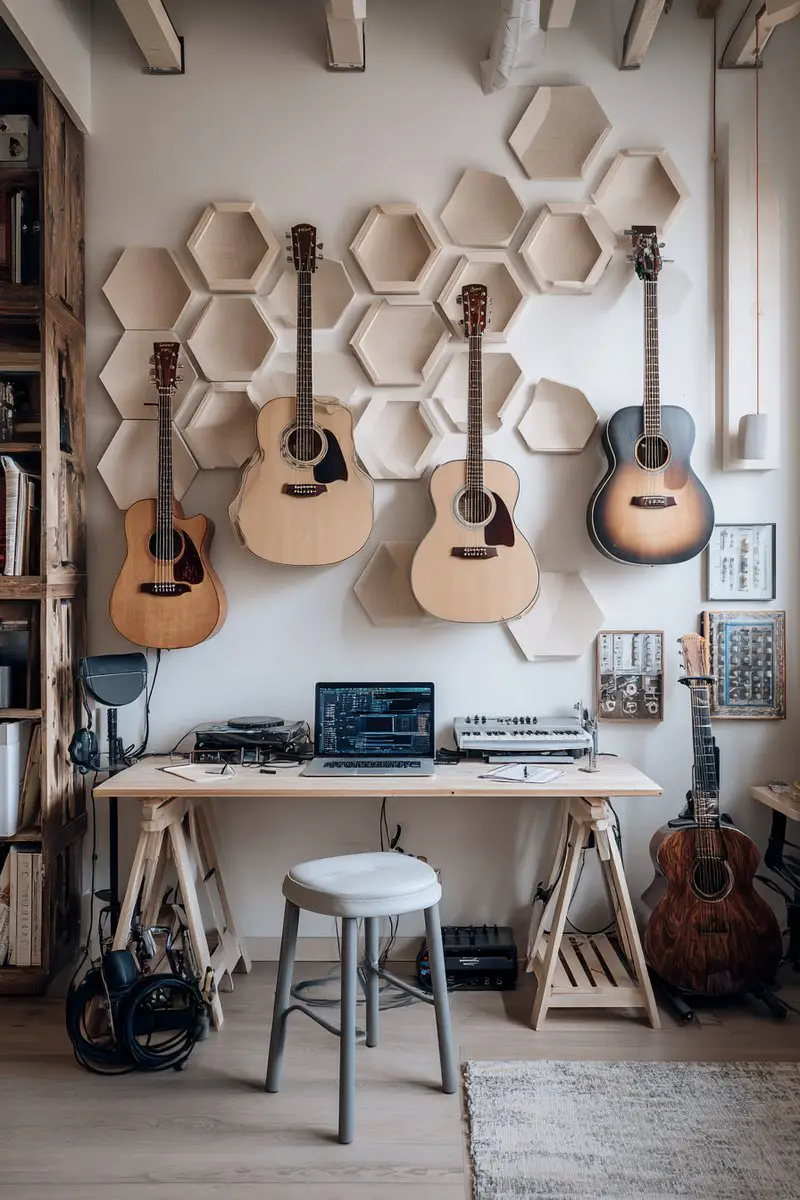
Whether you’re a graphic designer, video editor, podcaster, programmer, or writer, your hobby room needs to support significant time spent in front of a screen. This type of stunning hobby room design centers on ergonomics, technology integration, and minimizing distractions. A high-quality, adjustable desk and an ergonomic chair are non-negotiable to prevent strain during long sessions. Monitor placement is crucial; eyes should be level with the top third of the screen. Proper lighting, which reduces glare while providing enough illumination to prevent eye strain, is also vital. Ambient lighting supplemented by a good desk lamp works well. Cable management is key to keeping the space tidy and functional – think cable trays, sleeves, or ties to wrangle wires. For audio work like podcasting or music production, consider acoustic treatment like foam panels or bass traps to improve sound quality. For example, a programmer’s space might feature multiple monitors, a mechanical keyboard, and comfortable lighting, while a video editor needs serious processing power and calibrated monitors, all neatly arranged to facilitate workflow. It feels calm and focused, with just the hum of technology. Furthermore, noise-canceling headphones can be a great addition if your space is not fully isolated. According to tech workspace studies, an ergonomic setup can reduce discomfort by up to 80%. This dramatically improves focus over time. For internal linking potential, consider reading about choosing the best ergonomic chairs for long hours. Moving beyond the digital, let’s think about hobbies involving structure and building.
4. The Modeler or Builder’s Precision Workshop
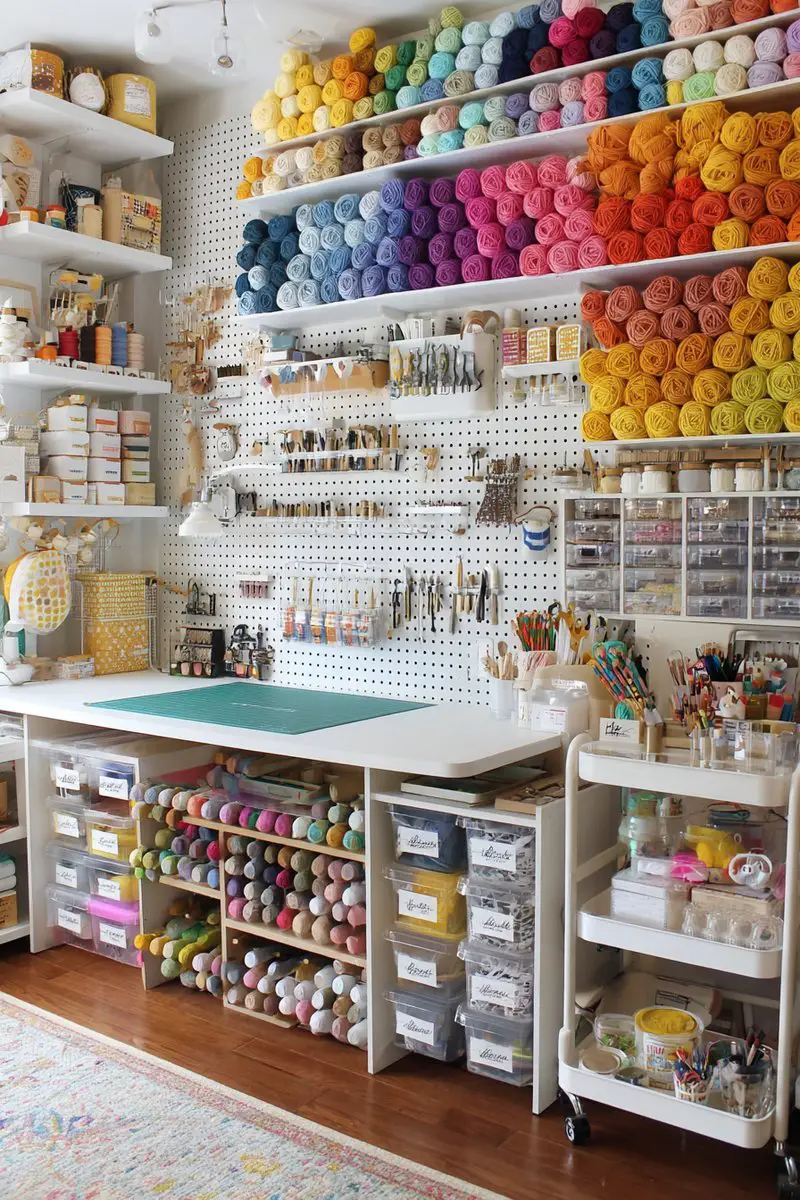
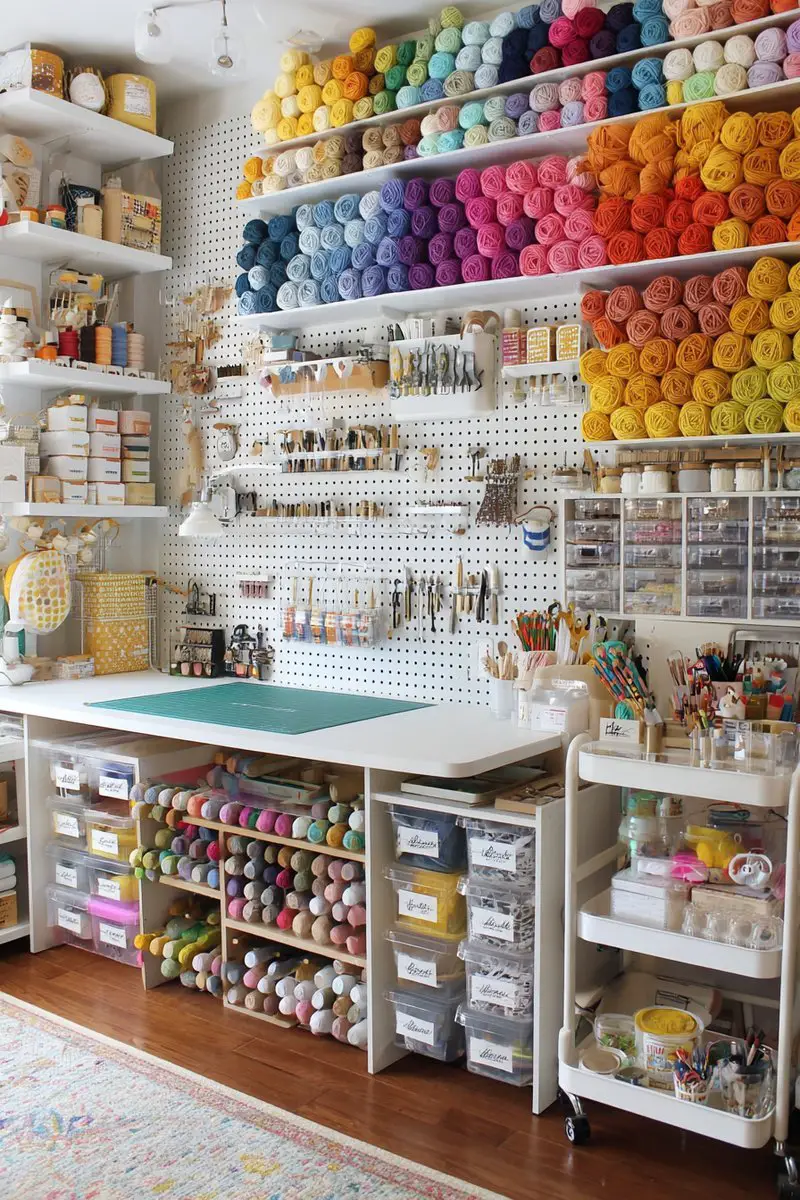
Model building (trains, planes, cars), woodworking, or even intricate LEGO constructions require precision, small parts management, and often specialized tools. A stunning hobby room for a builder needs dedicated workspaces for different tasks like cutting, assembly, painting, and drying. A sturdy workbench is essential, preferably with a durable, perhaps self-healing, mat surface. Storage needs to accommodate small components like screws, bolts, or model pieces, often requiring drawers with dividers or small part organizers. Wall-mounted tool racks keep frequently used items visible and accessible. Good ventilation is crucial, especially if you work with paints, glues, or solvents; consider an extraction fan or placing your workspace near a window. Safety should also be a priority, ensuring sharp tools are stored safely and electrical outlets are easily accessible but not overloaded. For instance, a model train enthusiast might have a large table for layout building, drawers for tiny figures and landscape materials, and a separate ventilated area for airbrushing. It might smell faintly of wood glue or enamel paint. Moreover, magnetic strips can be invaluable for holding tiny metal components. Data suggests that clearly defined task zones in a workshop reduce accidents by 25%. This highlights the importance of layout in a precision environment. As master modeler John Whittaker explains, “My hobby room isn’t just a place to build; it’s a system. Every tool, every part has its place. This organization allows me to lose myself in the build, not in the search for a tiny screw.” Consider adding task lighting that can be directed precisely where you need it. From building intricate worlds, we shift to the world of textiles and threads.
5. The Sewer or Quilter’s Textile Haven
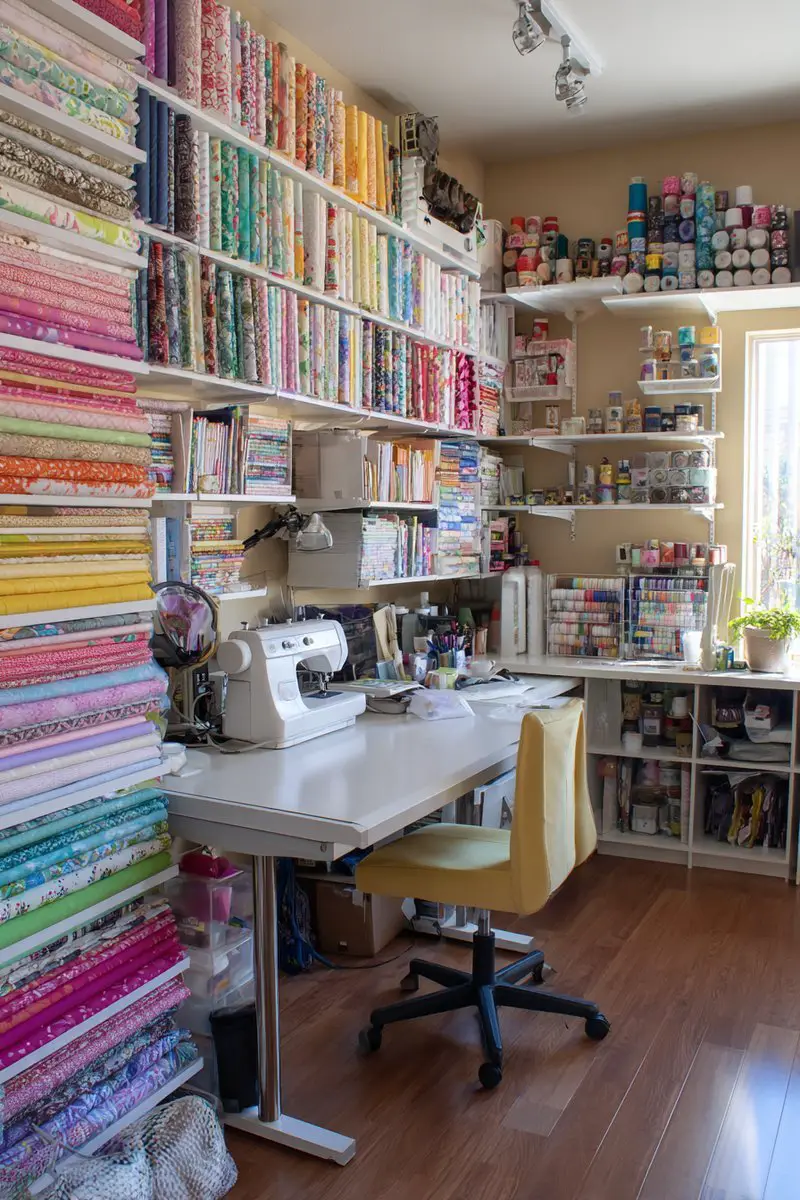
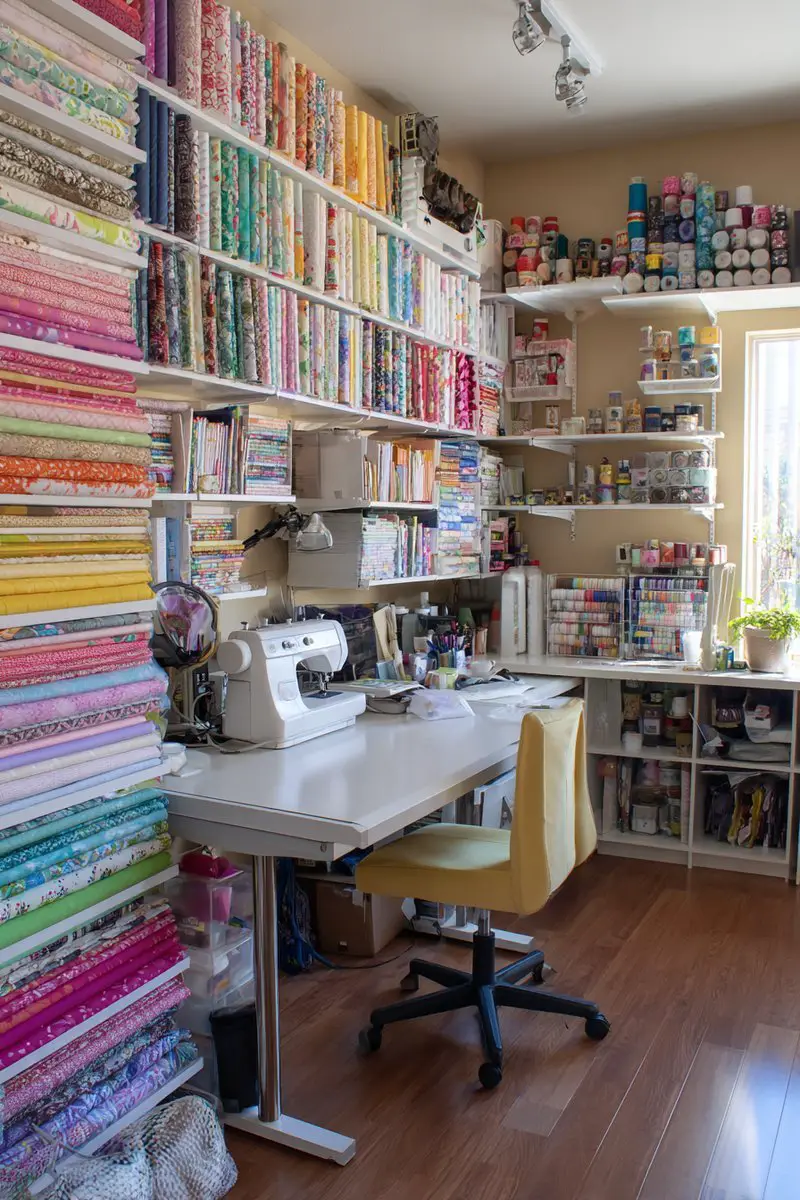
Sewing, quilting, and other textile arts involve fabric, thread, patterns, and specialized equipment like sewing machines, sergers, and ironing boards. A stunning hobby room designed for these crafts needs ample surface area for cutting fabric, space for machines, and smart storage for bulky items like fabric bolts and batting, as well as small items like needles and notions. A large cutting table, perhaps one that folds down or doubles as a desk, is invaluable. Storage solutions for fabric can include rolling bolts on shelves, folding them neatly in drawers, or using clear bins. Thread racks keep spools organized and visible. An ironing station, ideally positioned close to the machine, is also essential. Good task lighting focused on the needle area is crucial for detailed work. Consider a comfortable, adjustable chair for long sewing sessions. For example, a quilter’s space might feature a large, well-lit cutting table, shelves overflowing with colorful fabric, a sturdy ironing board always set up, and a sewing machine ready for action. The air might carry the faint, clean scent of washed cotton. Furthermore, using a design wall (a large felt or flannel board) helps visualize quilt blocks before sewing. Statistics show that sewers with dedicated cutting surfaces are 30% more efficient in their fabric preparation. This underlines the impact of having the right tools and space. Expert seamstress Clara Bennett shares, “My sewing room is my sanctuary. Having my machine always set up, my fabric sorted, and my cutting table clear makes me want to sew every day. It transforms a chore into a pleasure.” She suggests using old jelly jars or magnetic pin cushions for small notions. Next, let’s think about hobbies focused on literature and writing.
6. The Writer or Reader’s Literary Retreat
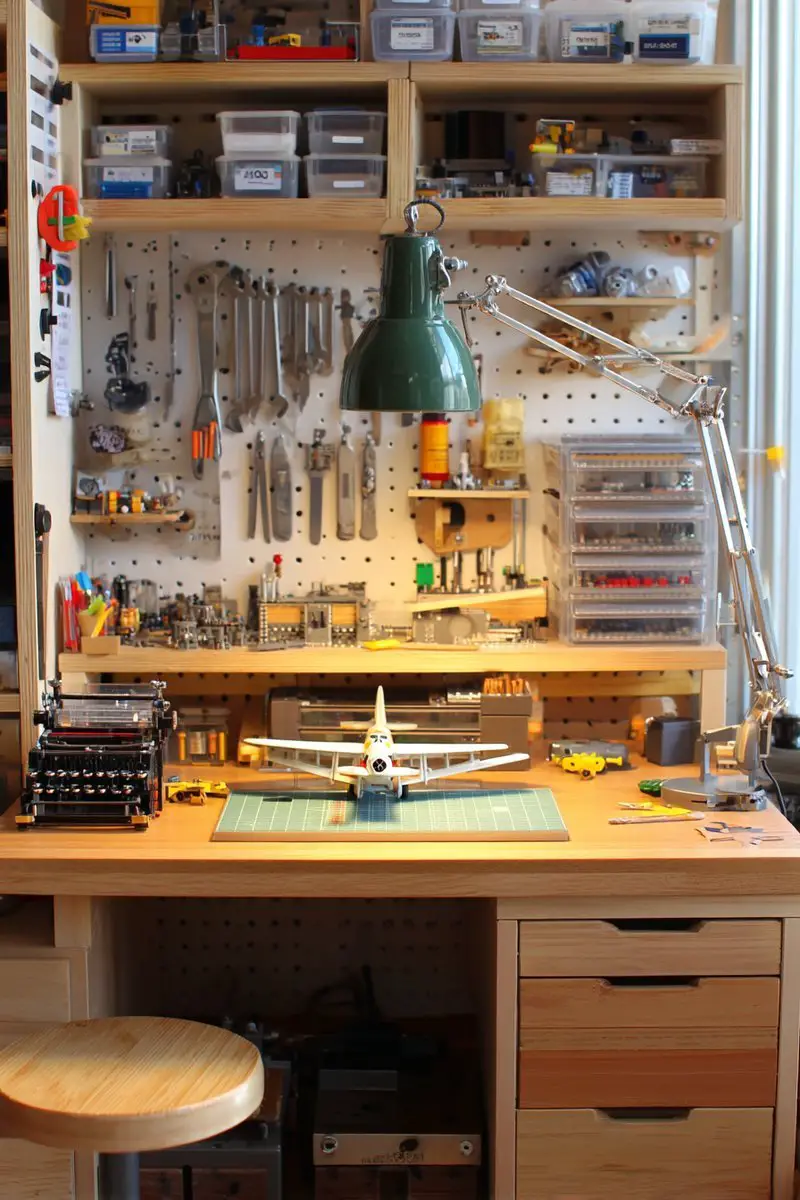

For those whose hobbies revolve around words – writing novels, poetry, journaling, or simply reading extensively – a stunning hobby room should evoke a sense of calm, comfort, and inspiration. This space prioritizes a quiet atmosphere, comfortable seating, and organization for books, notebooks, and writing tools. A sturdy, uncluttered desk with a comfortable chair is essential for writers. Good lighting that minimizes glare on screens or paper is important; a combination of ambient and task lighting works well. Ample shelving for books is, of course, a must for both readers and writers. Creating a cozy reading nook with a comfortable armchair, a soft blanket, and a good reading lamp adds another dimension to the space. Consider incorporating elements that inspire you, whether it’s art, plants, or personal mementos. For instance, a writer’s retreat might feature walls lined with beloved books, a simple wooden desk overlooking a window, a comfortable leather armchair in a corner, and perhaps a small tea station nearby. It smells faintly of paper and perhaps a hint of coffee. Furthermore, ensuring the space is free from electronic distractions (unless needed for writing) helps maintain focus. Data indicates that a quiet, dedicated space can improve writing productivity by up to 50%. This highlights the value of a distraction-free zone. Renowned author David Chen advises, “My writing room is my mind made manifest. It’s quiet, filled with the books that inspire me, and perfectly organized so I can find any note or reference immediately. It’s not just a room; it’s the engine of my creativity.” He emphasizes the importance of comfortable seating for long writing sessions. Transitioning from the world of words, let’s consider spaces for musical expression.
7. The Musician’s Soundproofed Sanctuary
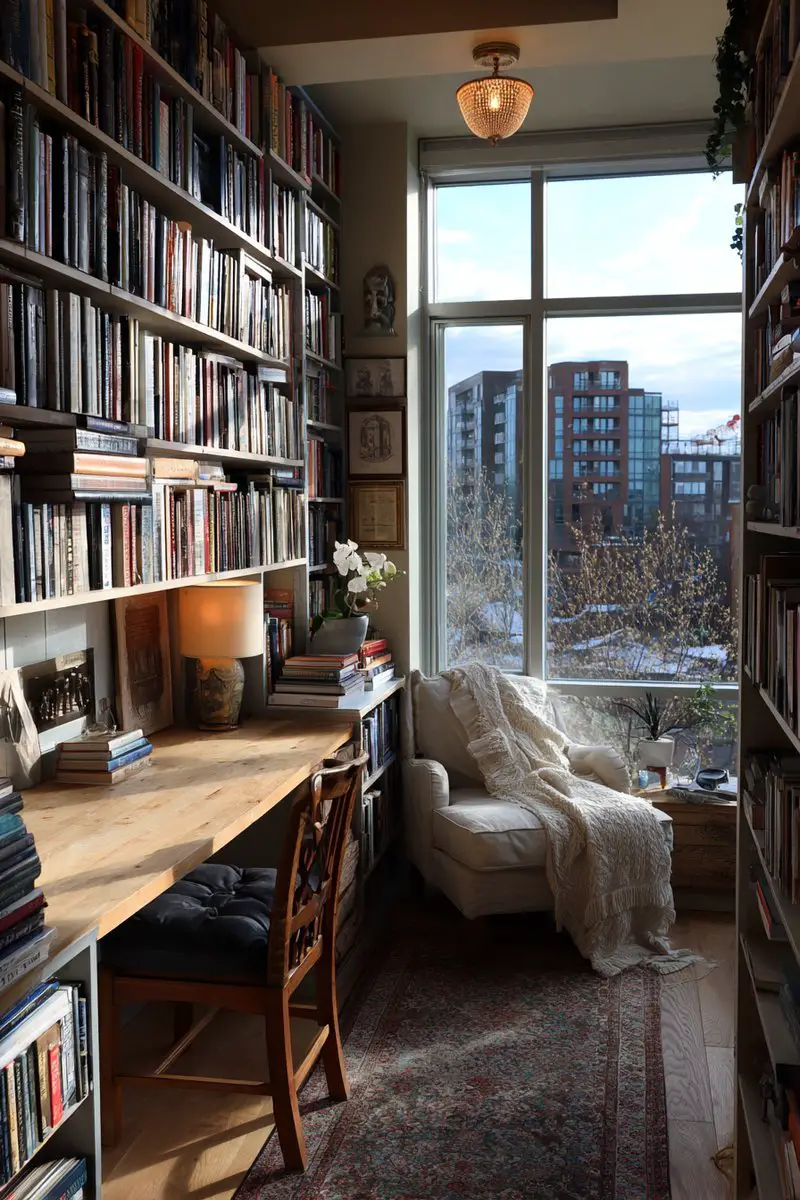
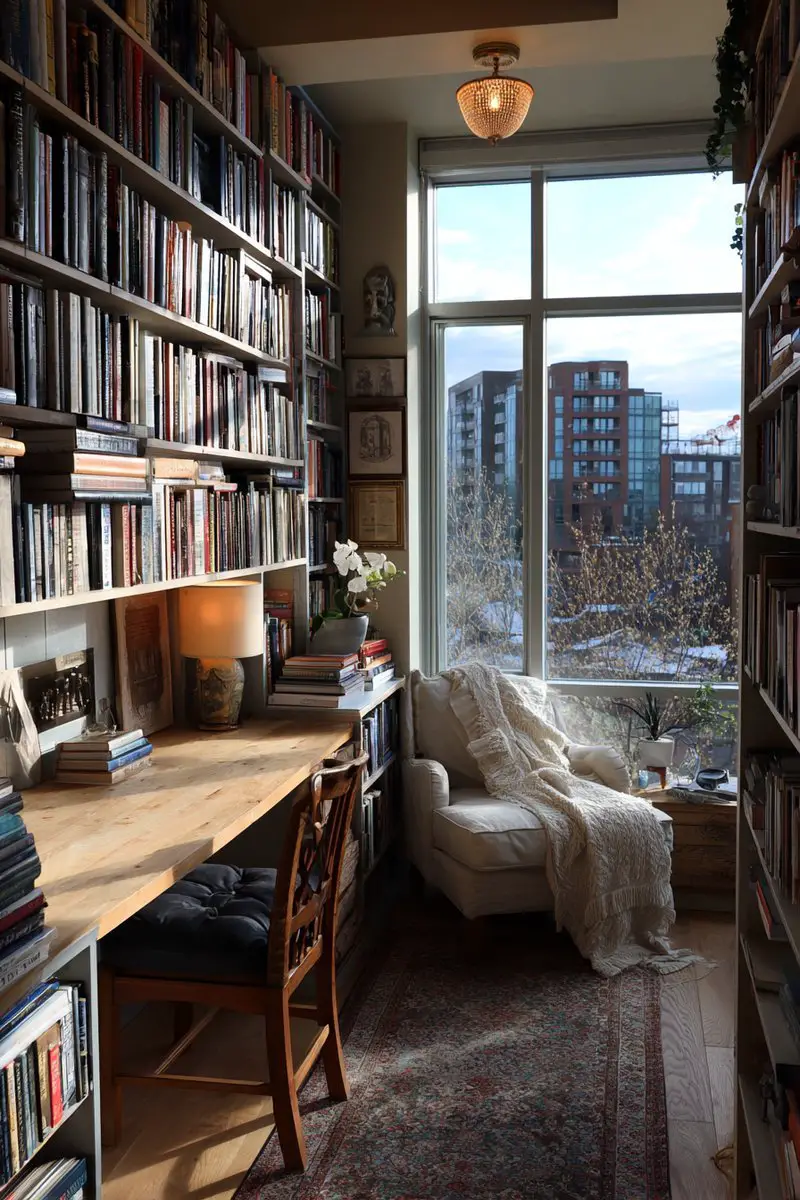
Whether you play an instrument, produce music, or practice vocals, a stunning hobby room for a musician needs to consider acoustics and organization for instruments, sheet music, and equipment. If noise is a concern for others in your home or neighbors, soundproofing or sound dampening becomes a critical design element – think solid core doors, acoustic panels on walls, or even building a room-within-a-room if truly isolated sound is necessary. Storage for instruments should be practical and protective, using wall mounts, stands, or cases. Sheet music and books need accessible shelving or filing systems. Equipment like amplifiers, pedals, or recording gear needs dedicated space and tidy cable management. Good lighting is important for reading music and seeing controls. For instance, a guitarist’s space might have guitars displayed on wall mounts, amplifiers neatly arranged, shelves of music books, and perhaps a small recording setup in a corner. It might carry the faint, warm smell of wood and guitar polish. Moreover, having a comfortable chair or stool for playing is essential. Studies suggest that practicing in a dedicated, acoustically treated space can improve perceived skill progression by 35% due to better focus and feedback. This emphasizes the functional benefit of sound control. Professional musician Sarah Lee notes, “My home studio allows me to practice and record whenever inspiration strikes, without disturbing anyone. The sound treatment was an investment, but it paid off tenfold in terms of productivity and creative freedom.” She recommends using cable ties religiously. Next, we’ll consider spaces for hobbies involving collections and intricate details.
8. The Collector or Assembler’s Display Hub
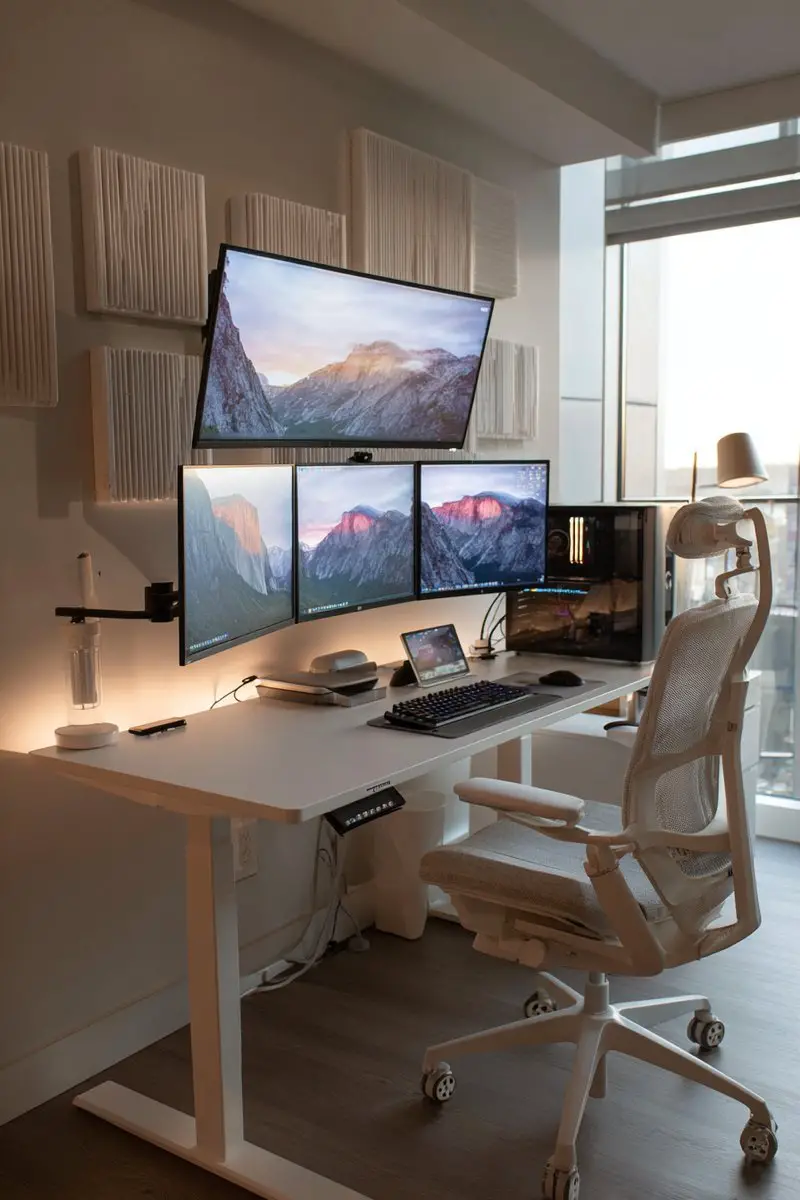
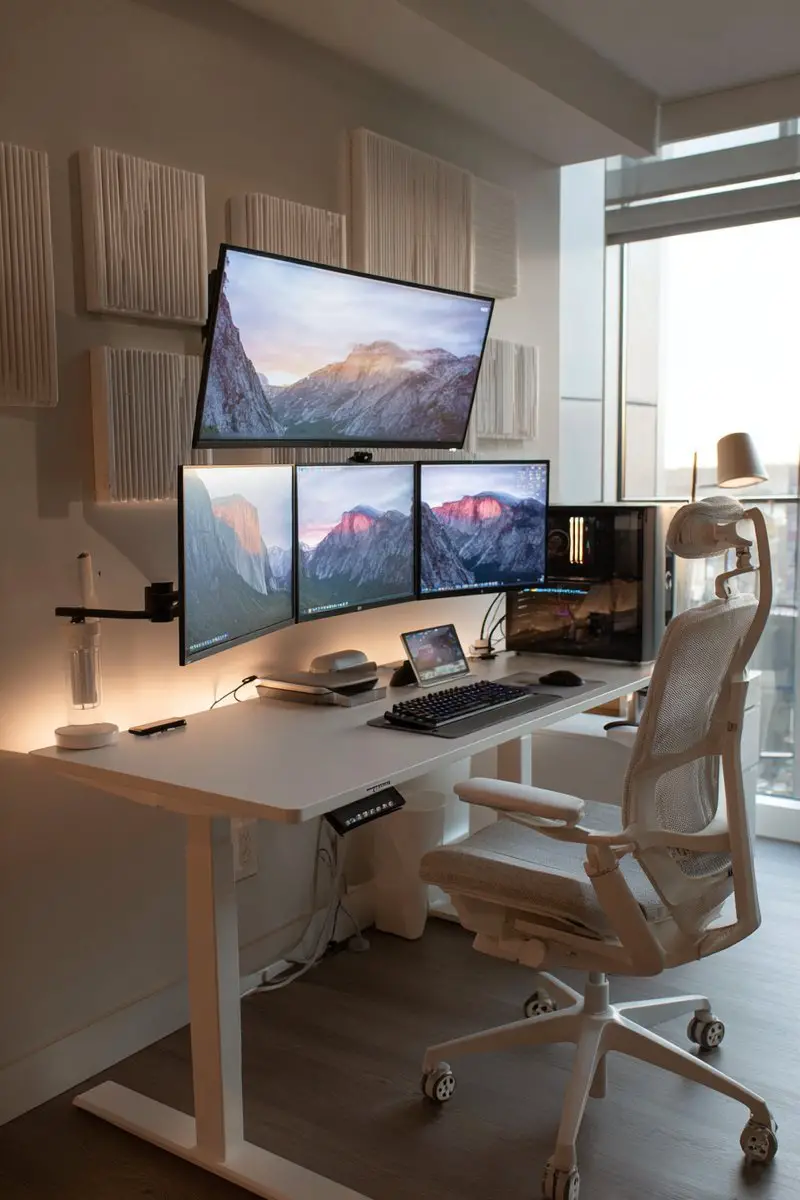
From stamp collecting and coin collecting to building detailed miniature worlds or assembling complex puzzles, these hobbies require meticulous organization, display space, and excellent lighting for close work. A stunning hobby room for a collector prioritizes secure and visible storage, often involving display cases, shadow boxes, or specialized albums and binders. Work surfaces need to be clean and stable, often with non-slip mats for handling delicate items. Lighting is paramount, frequently requiring magnifying lamps or adjustable task lights to illuminate small details. Storage for tools like tweezers, magnifiers, or glue pens needs to be close at hand and well-organized, perhaps in small drawers or tool caddies. Consider incorporating a comfortable chair that allows you to sit for extended periods while working on intricate tasks. For instance, a stamp collector might have specialized albums on shelves, drawers for un-sorted stamps, a well-lit table with a magnifying lamp for examination, and perhaps a small safe for valuable items. It might smell faintly of old paper and glue. Furthermore, using white or light-colored surfaces can help in seeing small items more clearly. According to collector communities, having a dedicated, organized space significantly reduces the risk of losing or damaging valuable collection items. This highlights the protective aspect of a well-designed space. As avid coin collector Robert Jones puts it, “My collection room isn’t just storage; it’s where I connect with history. Having everything organized, protected, and beautifully displayed makes the hobby so much more rewarding and productive because I can easily access and study any piece.” He suggests investing in good quality display cases that protect against dust and UV light. Looking ahead, creating a space that nourishes your passion is within reach.
Creating your own stunning hobby room is a deeply personal journey. It’s about carving out a dedicated space where you can fully immerse yourself in what you love, free from the clutter and demands of everyday life. By thoughtfully considering your specific needs, incorporating smart design principles, and prioritizing organization and ergonomics, you can build a sanctuary that fosters focus, boosts creativity, and ultimately leads to greater productivity and enjoyment of your chosen pursuit. Whether it’s a vibrant art studio, a meticulously organized craft haven, or a quiet writing retreat, your ideal hobby room awaits.
Ready to transform your space? Start by assessing your needs, decluttering your potential hobby area, and gathering inspiration specific to your craft. Begin with one or two key organization solutions or ergonomic upgrades, and build your stunning hobby room one step at a time.
